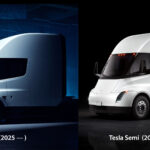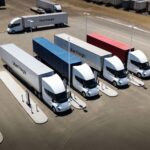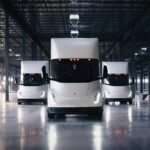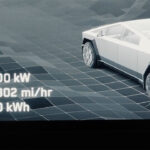The global supply industry must drastically cut greenhouse gas emissions, primarily due to product transportation and distribution. Electrifying fleets, from long-haul trucks to last-mile delivery vehicles, has become a crucial tactic in this undertaking, guaranteeing a significant reduction in logistics carbon footprint. EVs discharge zero emissions from their exhaust. Moreover, they have a negligible carbon impact while running on renewable energy.
Several developments have shaped the EV landscape, especially favorable policies and innovative infrastructure. In 2024, the biggest trends impacting fleet electrification revolve around solving the issues that have previously inhibited widespread adoption.
First up is the transition costs. In a recent industry event involving global fleet leaders, 76% of the attendees highlighted the availability of affordable, adequate-range vehicles as the No. 1 item to accelerate electrification.

Lowering production costs is essential to meeting this goal. To that end, EV makers have been exploring new manufacturing methods to improve efficiency without transferring the burden to consumers. For example, Tesla recently introduced Giga Castings to optimize production and reduce assembly time. Such technologies are expected to drive price parity between EVs and fuel vehicles by 2027.
Vehicle-to-grid (V2G) innovations are another exciting trend defining fleet electrification. These systems transform EVs into energy storage systems on wheels, providing a reliable source of electricity and reducing reliance on fossil fuels. More importantly, they offer a compelling reason to fast-track the adoption of EVs because of their grid-supply enhancement potential.
Efficient storage has been a bane in renewable energy, but introducing these technologies may provide a short-term solution. Almost all industries can turn to V2G-powered electric trucks and vans as a viable alternative source of energy during peak demand times.
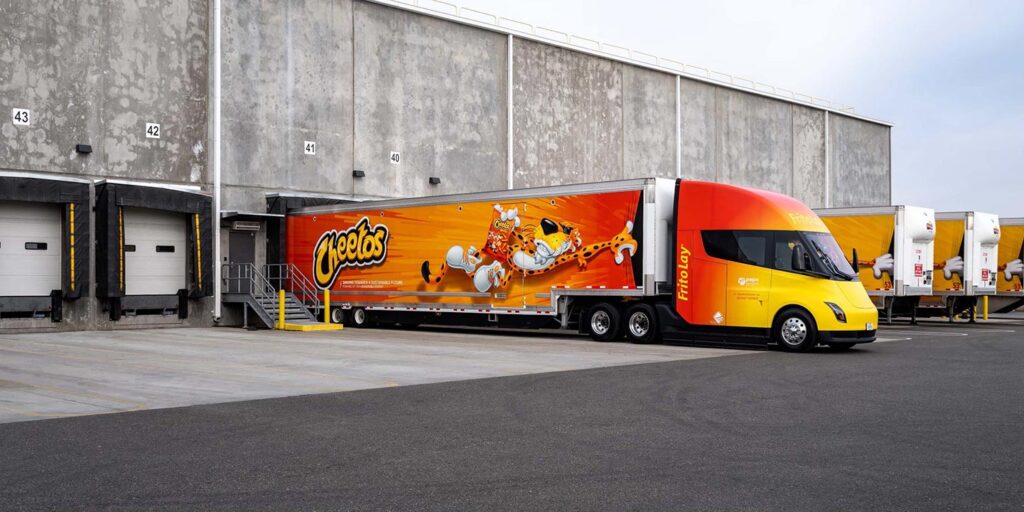
Related: Gearing Up to Meet the Megawatt Charging System (MCS) Demands of Electric Trucks
Another huge hindrance to electrifying supply chain fleets has been the charging time. The logistics market is ever-moving, and deadlines wait for no one. Innovative technologies are at the forefront of addressing this challenge, with newer vehicles featuring significantly reduced recharge durations. For example, the Freightliner® eM2’s batteries can go from 0% to 80% in approximately 60 minutes and cover up to 250 miles on a single charge.
Ultrafast charging facilities are also central to this requirement and are quickly becoming the predominant trend in logistics electrification. Tesla continues to set the pace in this regard with its 250 kW Superchargers, which can provide up to 200 miles of range in just 15 minutes. In July 2024, BP announced it had ordered $100 million worth of these units to be installed across its key locations. This development could represent a massive milestone on the road to electrifying supply chain vehicles by eliminating long charging times and improving the reliability of deliveries.
The emergence of AI-driven fleet management solutions is yet another trend that empowers drivers to make smarter choices on and off the road. They are particularly useful in streamlining last-mile deliveries by leveraging AI data processing to make informed decisions. For instance, automated sensors can provide real-time weather and traffic updates to help with route planning and optimization.
This signals several advantages for fleets, including reduced total mileage and seamless handling of increased order volumes. Ultimately, these AI systems lead to lower CO2 emissions and considerably decreased operational costs.
The evolving regulatory landscape rounds out the latest changes in supply chain efficiency. Governments must implement regulations regarding the industry’s carbon footprint. However, it will not be as simple as enforcing strict rules for fleet services.
Policymakers must create a favorable environment to ease the transition through enhanced subsidies and incentives. In 2023, the then-chairman of the American Trucking Association, Andrew Boyle, testified before Congress that “converting the nation’s diesel trucks to electric would require a $1 trillion investment,” — a tab that consumers would ultimately pick up. Without improved intervention mechanisms, electrifying the overall transportation network will remain elusive.
Supply chain fleet electrification is the key to a sustainable future. This transformation goes beyond merely replacing combustion engines with electric models. It requires a comprehensive reconsideration of infrastructure and operations, from overseas shipping to doorstep deliveries. Furthermore, logistics companies must weigh short-term expenses against long-term sustainability objectives and receive ample support in switching to EVs.
Stay tuned for constant Tesla updates, follow us on:
Google News | Flipboard | X (Twitter) | WhatsApp Channel | RSS (Feedly).
Related
- 2026 Tesla Semi: new design, production timeline, specifications, comparison to legacy generation
- Uber Freight chooses Tesla Semi for its Dedicated EV Fleet Accelerator Program
- Tesla Semi program: factory update, 46 new Megachargers, volume production to start in 2026
- How New Regulations Impact the Electrification of the Transportation Industry
- Tesla V4 Cabinet to unlock Cybertruck 500kW and Semi 1.2MW charging speeds at V4 Superchargers
- Tesla Semi replaces diesel trucks with lower operating costs, fleet driven 7.5M km, 1700 km in 24 hours is possible, Dan Priestly at IAA

